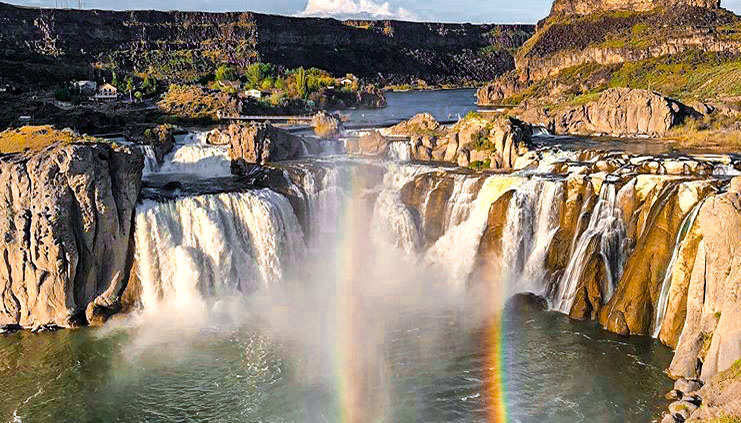
Shoshone Falls is a waterfall in the western United States, on the Snake River in south-central Idaho, approximately three miles northeast of the city of Twin Falls. Sometimes called the “Niagara of the West,” Shoshone Falls is 212 feet in height, 45 feet higher than Niagara Falls, and flows over a rim nearly one thousand feet in width. Formed by the cataclysmic outburst flooding of Lake Bonneville during the Pleistocene ice age about 14,000 years ago, Shoshone Falls marks the historical upper limit of fish migration in the Snake River, and was an important fishing and trading place for Native Americans. The falls were documented by Europeans as early as the 1840s; despite the isolated location, it became a tourist attraction starting in the 1860s. At the beginning of the 20th century, part of the Snake River was diverted for irrigation of the Magic Valley. Now, the flows over the falls can be viewed seasonally based on snowfall, irrigation needs and hydroelectric demands. Irrigation and hydroelectric power stations built on the falls were major contributors to the early economic development of southern Idaho.
